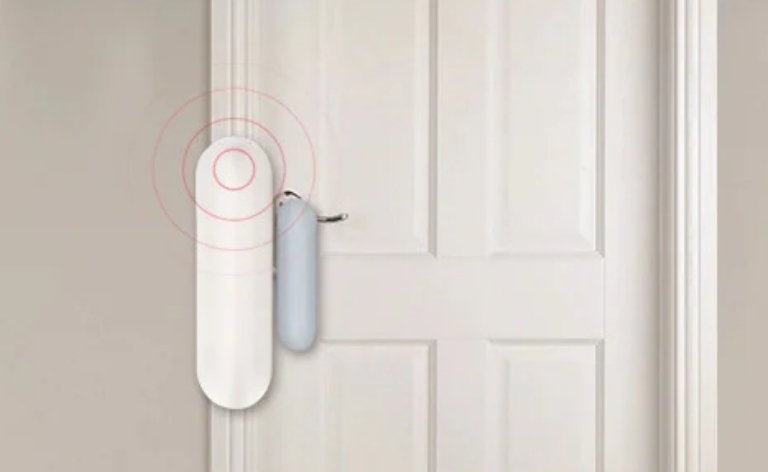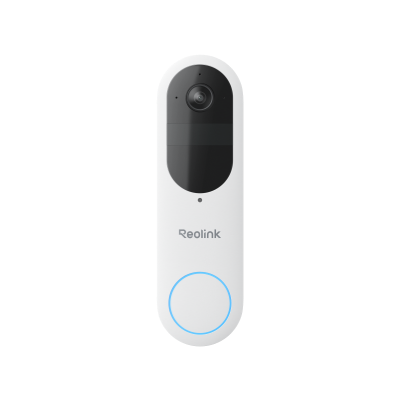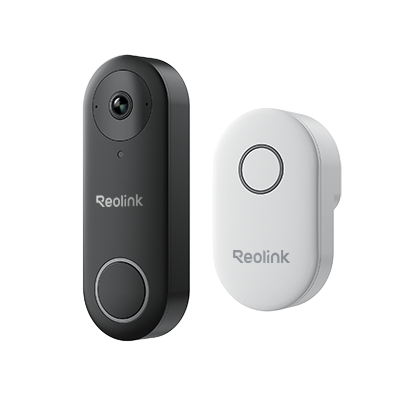Door Contact: The Ultimate Guide for Enhanced Property Safety

Home security is a top priority for homeowners, and as technology advances, so do the tools and devices available to safeguard our homes. One such essential component of a comprehensive security system is the door contact. In this comprehensive guide, we'll explore what door contacts are, how they work, and why they are a crucial element in enhancing the safety of your property.
Please check out our comprehensive guide on window security for homes if you are interested in learning more about them.
Overview of Door Contacts
Door contacts, also known as door sensors or magnetic contacts, play a crucial role in security systems by detecting the status of doors and windows. Let's explore the overview of them.
What is the door contact?
Door contacts serve as sensors that inform a system about the status of a door—whether it's open or closed. Widely employed in alarm systems, these sensors are exceptionally user-friendly and offer versatile programmability. Available in both wireless and hardwired configurations, they provide a straightforward yet effective means of enhancing security.
How does door contact/sensor work?
Door contacts or sensors operate on a straightforward principle involving two main components: a sensor and a magnet. The magnet is placed on the door, while the sensor is installed on the door frame.
When the door is closed, the sensor and magnet are close, completing an electrical circuit to signal that the door is securely shut. Upon opening the door, the sensor and magnet move apart, breaking the circuit and triggering the sensor to signal to the central security panel.
This communication prompts the security system to respond according to its programming, whether it's sounding an alarm, sending notifications, or initiating predefined actions.
Types of Door Contact
Now that we understand the basic principles of door contacts, let's explore the various types available to cater to diverse security requirements.
Surface-mount alarm door contact
The Surface-Mount alarm door contact is a fundamental type of door sensor designed for easy installation on the surface of doors or windows. Surface-mount contacts consist of a magnetic piece affixed to the door and a sensor attached to the door frame (wired).
Known for their simplicity in installation, surface-mount alarm door contacts have been a practical choice for various security applications. However, this traditional wired setup faces obsolescence as wireless home security systems gain popularity.
Recessed alarm door contact
Recessed alarm door contacts are discreet sensors installed inside windows or doors, with soldered connections allowing flexible wire movement into the frame. Unlike surface-mount alternatives, recessed contacts are embedded in the frame for a seamless appearance. These contacts are favored for their aesthetic appeal and are commonly used in wireless home security or alarm systems, offering a concealed and effective solution.
Roller ball alarm door contact
A Roller Ball alarm door contact is a type of door sensor designed for specific applications, particularly where there are sliding or rolling doors. Unlike traditional contacts that rely on a magnetic connection, roller ball contacts use a rolling ball mechanism. The sensor contains a small ball that rolls freely within the housing. When the door is closed, the ball rolls into a position that completes the circuit, signaling that the door is securely shut.
If the door is opened, the ball moves, breaking the circuit and triggering the sensor to send an alarm signal. Roller ball alarm door contacts are useful for doors with irregular or non-traditional closing mechanisms, providing an alternative solution for effective security monitoring.
Overhead contact sensors
Overhead door contacts, utilized primarily for large roll-up garage doors, incorporate armored cables for enhanced durability. Given the typical gap between garage doors and frames, these sensors feature a wider tolerance to prevent false alarms. Mounted above the door opening, they consist of a magnet on the moving part and a sensor on the stationary frame.
Pull-apart contact sensors
Pull-apart contact sensors, also known as split magnetic contacts, are a type of door sensor designed to be easily separated or pulled apart. These sensors consist of two pieces: a magnet and a sensor. The magnet is typically installed on the door or window, while the sensor is mounted on the frame. Pull-apart contact sensors, such as a sliding door, is commonly used when a flexible and easily detachable security solution is needed.
Door Contacts Installation
Ensuring the proper installation of door contacts is crucial for their effective performance in security systems. Now that we've discussed where to install door contacts and the considerations for different surfaces, let's delve into the step-by-step process of installing these sensors.
Where to install door sensors?
For optimal performance, mount a door sensor on a flat surface, positioning one half on the door and the other on the adjacent frame. The specific placement of each half is generally interchangeable as long as they are in close proximity (within an inch or two).
However, you have to pay attention to the material of the mounting surface. If you intend to install a magnetic sensor on a metal surface, adjustments may be necessary to prevent interference with regular operation. For a metal door with a wooden frame, position the magnet on the door and the door alarm on the frame. Additional mounting hardware may not be necessary if the magnet adheres securely to the door, but it's advisable to secure it to prevent displacement in case of a door slam.
How to install door contacts?
Door contacts offer two mounting options: surface-mount and recessed. Surface-mount contacts are visible on the door's exterior, while recessed contacts are concealed within the door and its frame or jamb.
The installation of surface-mount contacts
-
Prepare the surfaces where you'll be attaching the sensor's two halves by cleaning them for optimal adhesive performance.
-
Begin by affixing the main sensor and applying pressure for approximately 30 seconds to establish a secure adhesive bond.
-
Position the magnet on the surface opposite the sensor. When mounting on a door, ensure there's sufficient space for the door to open and close without making contact with the sensor.
-
Verify the sensor's functionality by testing it through the door or window's opening and closing motions. The status can typically be monitored through a mobile app, a small LED indicator, or your burglar alarm's control panel.
The installation of recessed contacts
-
Carefully drill holes in the door and frame where the main sensor and magnet will be placed. Be precise to achieve a snug fit.
-
Gently insert the main sensor into its designated hole in the door and the magnet into the corresponding hole in the frame. Ensure they are aligned properly.
-
Use appropriate screws to secure the main sensor and the magnet in their respective positions. Tighten them enough to ensure stability without causing damage.
-
Test the functionality of the recessed contacts by opening and closing the door. Confirm that the sensor detects the magnet's proximity as intended.
Applications of Door Contacts
Door contacts find versatile applications in various settings, ranging from home security to smart home integration, ensuring enhanced safety, monitoring, and automation across diverse environments.
Home security
Door contacts are widely used in home security systems to detect unauthorized entry. When a door is opened or closed, the contact is broken or closed, triggering an alarm. Similar contacts can be used on windows to detect if they are opened or tampered with.
Access control systems
Door contacts are integrated into access control systems to monitor and control entry to secure areas. They help record and report when doors are opened, providing a log of access events.
It also can be used to secure specific zones within a facility, ensuring that only authorized individuals can enter.
Smart home integration
Door sensors seamlessly integrate into smart home systems, enabling a range of actions such as turning on lights, adjusting thermostat settings, and sending notifications based on door activity. Moreover, when integrated with smart home security systems, door contacts can activate security cameras, ensuring that unexpected door openings are promptly recorded for surveillance purposes. Beyond security, door contacts contribute to energy efficiency by linking with smart HVAC systems.
Common Issues and Troubleshooting of Door Sensors
Door sensors, while generally reliable, can encounter common issues. Here are some common problems and troubleshooting tips:
False alarms
Door sensor triggering alarms without a valid reason. In this situation, you should check for interference from other electronic devices, ensure proper alignment of sensor components, and adjust sensitivity settings if applicable.
Battery issues
The door sensor is not working or providing intermittent signals. In this situation, you should replace the batteries with fresh ones and ensure proper battery orientation. Some sensors may have low battery indicators that can be checked.
Sensor problems
The sensor range is insufficient, leading to signal loss. In this situation, you should check the specified range of the sensor and ensure it is within the recommended distance. Consider repositioning the sensor or adding a repeater device if needed.
Physical damage to the sensor or magnet can also cause the door contacts to malfunction. In such a case, you may inspect the sensor and magnet for visible damage. If damaged, they may need to be replaced. Consider weather-resistant options for outdoor sensors.
Another Measure to Enhance Property Security - Video Doorbell
In addition to implementing door contacts for enhanced property safety, another valuable measure to bolster overall security is to install a video doorbell. Now, we will show you 2 reliable doorbell cameras.
Smart 2K Wireless Battery Video Doorbell - Reolink Battery Doorbell
For beginners, a wireless doorbell camera is a great way to boost front door security. The new Reolink Battery Doorbell is an excellent choice. This battery-powered camera offers 2K 4MP resolution with a head-to-toe view, ensuring clear, detailed footage. It connects to both 2.4GHz and 5GHz WiFi for a reliable connection and can detect people, vehicles, and packages to send instant alerts. Plus, it integrates smoothly with the Reolink Home Hub, Google Assistant, and Amazon Alexa for added convenience.
Smart 2K Dual-Band Wi-Fi Battery Doorbell
2K 4MP Head-to-Toe View; Person/Vehicle/Package Detection; Works with Reolink Home Hub & Wi-Fi NVR; 5/2.4GHz Dual-Band Wi-Fi.
Smart 2K+ Wired WiFi Video Doorbell - Reolink Video Doorbell WiFi
Reolink Video Doorbell WiFi is an excellent choice for advanced home security, offering crystal-clear 2K+ (5MP) HD video quality to keep a close eye on your property. With its dual-band 2.4/5GHz WiFi support, this smart doorbell ensures a reliable and fast connection for real-time monitoring. The integrated person detection feature enhances accuracy, notifying you only when relevant motion is detected.
Smart 5MP Video Doorbell with Chime
5MP Super HD Day & Night, Person Detection, 2.4/5 GHz Dual-Band WiFi, 180° Diagonal Viewing Angle, Two-Way Audio, Rich Notification.
Smart 2K+ Wired PoE Video Doorbell - Reolink Video Doorbell PoE
Reolink Video Doorbell PoE offers 2K+ video resolution that ensures detailed footage of your surroundings. With Power over Ethernet (PoE) functionality, this smart doorbell provides a reliable and straightforward power source, eliminating the need for complex wiring setups. The built-in person detection feature enhances its efficiency, allowing you to receive timely alerts only when human activity is detected, reducing unnecessary notifications.
Smart 5MP Video Doorbell with Chime
5MP Super HD, Person Detection, Power over Ethernet, 180° Diagonal Viewing Angle, Two-Way Audio, High-Quality Night Vision.
FAQs
1. Are door contacts normally open or closed?
The choice between normally open and normally closed configurations depends on the specific requirements of the security or monitoring system. In many cases, the default configuration can be adjusted or selected based on the needs of the user or the specifications of the door contact device.
For example, in a typical home security system, door contacts are often configured as normally closed, and the circuit opens when the door is opened, triggering an alert.
2. Do door contacts need power?
Traditional door contacts, like magnetic reed switch types, operate without external power. They use a passive system relying on the door's movement and magnetic fields.
However, modern smart door sensors or more advanced security systems incorporating additional features, such as wireless communication or integration with smart home devices, may require power. These devices often use batteries or are connected to a power source to support additional functionalities like sending alerts to smartphones, integrating with security systems, or providing remote monitoring.
3. Do door contacts require maintenance?
Not much, really. Door contacts are pretty low-maintenance. Just watch for any physical damage or signs of wear and tear. Doing a little cleaning to ensure they're free of dust or debris wouldn't hurt either.
Conclusion
By embracing the insights shared in this ultimate guide, you empower yourself to make informed decisions about installing, maintaining, and utilizing door contacts. As you implement these measures, you take a proactive step towards creating a safer environment, providing peace of mind for you or your family.
If you like this article and find it helpful, share it with your friends. Do you have something to say about door contacts? Make sure you leave a comment below!
Related Posts
If you are looking for method to enhance your home window security, check out the following posts.
Search
Subscribe for the Latest Updates
Security insights & offers right into your inbox


